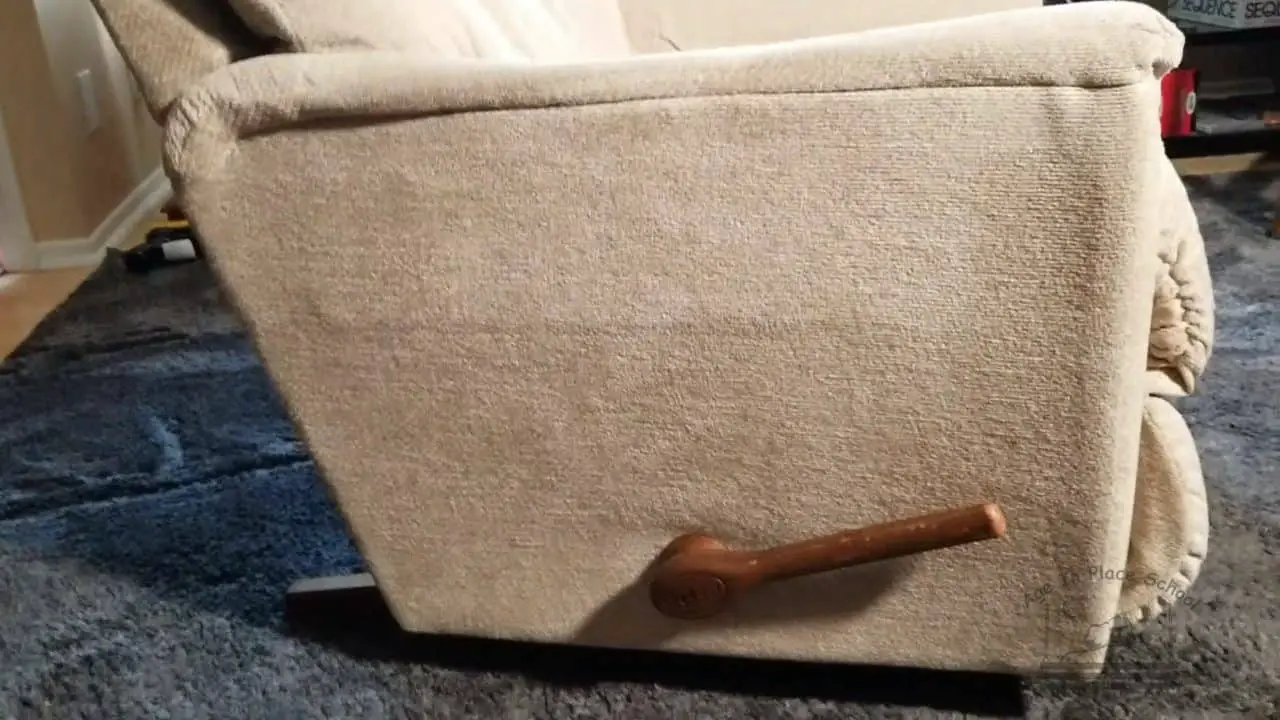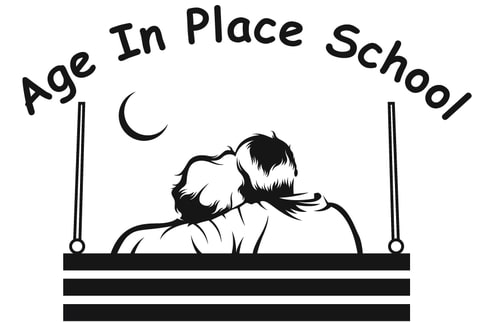This post contains affiliate links.
This article answers the question, “Can I sit in my recliner after total knee replacement surgery?”
This is the question almost every total knee replacement patient asks me on my first visit to see them in their home to initiate their home physical therapy rehabilitation, about two days after the surgery.
Most have already discovered the recliner to be the most comfortable chair in their home, but they want to be sure what they are doing is acceptable. Some are even sleeping in their recliner chairs.
Can I sit in a recliner after knee replacement?
A recliner chair is the chair of preference after total knee replacement surgery, but be sure the reclining mechanism has a side-lever action footrest control and does not require leg power to return the footrest.
Power-lift chairs can be helpful for patients who have difficulty rising from a chair.

Physical therapists refer to a joint position concept known as “the loose pack position”.
“Loose pack positioning is where a recliner chair really helps a total knee replacement patient.
Loose-pack position simply means the position where the specific joint is placed in a position whereby all portions of the joint capsule are in their relaxed state and all portions of the joint capsule are under no stress.
For the knee joint, that is about 25 degrees of flexion (knee bend).
A recliner chair can allow a total knee replacement patient to get into that loose-pack position by just elevating the footrest to that position.
A recliner chair also allows the patient to find a sitting position that is comfortable to converse or watch television in the loose pack position. A regular chair is designed to sit with the knee bent at 90 degrees of flexion, which is much more uncomfortable than the 25 degrees of flexion that can be achieved in a recliner chair.
Follow this link for more information on the cost of a fabric recliner chair (Amazon link).
Follow this link for more information on the cost of a faux leather recliner chair (Amazon link).
The Problems With Recliner Chairs After A Total Knee Replacement
Recliner chairs are more difficult to get out of than a standard non-reclining chair.
First, in the non-reclined position, the patient sits deeper in the recliner chair than in a non-reclining chair. This forces the patient to “scoot to the front of the chair” to get in position to get up out of the chair.
This can be a significant problem for patients with weakened arm strength.
Second, some recliner chairs require digging the heels into the footrest to get the footrest to retract.
That is too much for a total knee patient to do in the early days after the surgery.
Be sure the recliner chair has a side handle to raise and lower the footrest.

Some of my patients have purchased a recliner-lift chair to solve their strength-related problems.
One reason my total knee patients tell me they purchased a recliner-lift chair is to help them get up out of the chair because of decreased arm strength.

Follow this link for more information about the cost of a recliner lift-chair (Amazon link).
How Does a Recliner Chair Help Leg Swelling After Total Knee Replacement?
Elevating the leg in a recliner chair after a total knee replacement helps reduce the swelling in the leg and places the knee in a loose-pack position to reduce internal knee swelling as well.
My total knee replacement patients have almost always been instructed by someone, a nurse, hospital physical therapist, or doctor, to elevate their leg above their heart to help reduce and prevent swelling.
While this is great advice, getting into a position where the leg is higher than the heart usually requires the patient to lie flat on the bed and prop the leg up onto something, usually stacked pillows.
This is a very non-functional position to do ANYTHING, even watching television.
Most of my patients will not tolerate this position for very long before they are up and changing to a more functional position.
It is true that sitting in the dependent position (sitting with the feet on the floor) can and does cause circulation problems, which, left unaddressed, can lead to lower leg swelling and stasis ulceration.
I instruct all my total knee patients to limit sitting in the dependent position to no more than 15 minutes before elevating the leg.

Elevate the feet!
The good news is that my patients do fine without putting their legs above their hearts. Sitting in a recliner chair elevates their leg to near horizontal, even though the leg is not higher than the heart, and that seems sufficient to help reduce the swelling.
If I had total knee replacement patients who also had a diagnosis of heart failure, I certainly would encourage them to place their legs above their heart.
Then again, I would not expect a person with heart failure to even be a candidate for knee replacement.
Final Thoughts:
My advice is for every total knee replacement patient to have a recliner chair, be it manual or lift-assist, for at least the first couple months after surgery.
The very best scenario is for the total knee patient to have the recliner chair for a month or more before the surgery so the chair is already “broken in” before the surgery.
Take into consideration:
- Do I need a zero-wall clearance recliner chair?
- If it’s a recliner lift chair, where can I put the chair in my home that has access to a power outlet?
- If it’s a non-lift assist recline chair, does it have a weight restriction?
Read my other articles about Total Knee Replacement
Happy Recovery In Your Recliner
Paying It Forward
Perhaps you are approaching or already retired and wondering how you could earn extra money in retirement.
One option would be to do as I am doing.
Read my article How To Generate Retirement Income: Cash In On Your Knowledge.
Age In Place School is a participant in the Amazon Services LLC Associates Program, an affiliate advertising program designed to provide a means for sites to earn advertising fees by advertising and linking to Amazon.com. We also participate in other affiliate programs which compensate us for referring traffic.


